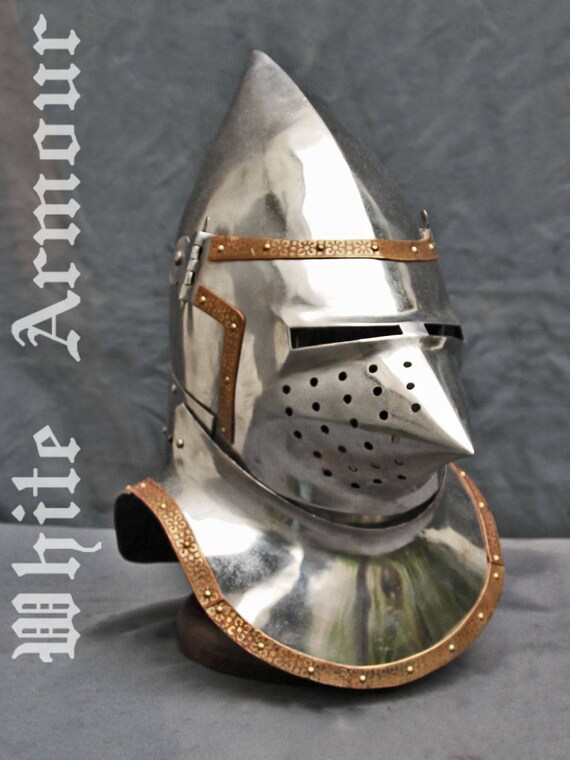you must have forgotten that there’s a civil war going on
quality necro my dude
Resurrection spell. Burn him!
I <3 how this forum is a fountain of history lmao im so hype for this game as a history nut and not being knowledgeable in this area during this time period
gotta love the kitty pics as well lol
Don’t worry, i’ve lots of them. 

Unfortunately while KCD and Warhorse likes to tout their historical “realism”, the armor in the game is a complete joke, and the selection of helms in the game is just wrong, completely wrong. To start off several helmets present in KCD shouldn’t exist anymore due to be being outmoded. The “German Bascinet”, which is in reality just an early visored bascinet, would have likely fallen out of use by the mid 14th century, if not earlier. The Cumans on a whole wear completely wrong armor, Cumans in the 14th-15th centuries didn’t wear much, if any armor and were just lightly padded fast moving skirmish cavalry and nothing more. Their armor is completely out of date and would have fallen out of fashion in the 13th century, let alone the 14th, and certainly would not even exist in the early 15th outside of the trophy room of some family house that had existed since the mid 13th century.
Other helms, such as the Bascinet-With-Klappvisor, and the KCD rendering of the Hounskull, are completely fictitious renderings of historical helms, and look nothing like the real deal. In a similar vein the helms that @Dushin brought up are also completely wrong and fictitious “sport” helms used by the bohurt community and did not exist. @Kazak is also incorrect. Great helms were still present in warfare in the 14th century, majorly (the Italians loved them if we go by their artwork), and only faded out of use in the 15th century. However if we decide to label the famous Frogmouth “tourney” helm a great helm as well (which it should, as it is a derivative), they were in fact used in the field and do not limit vision nearly as much as some might believe. Look up Augusto Boer Bront on facebook as part of the XIV and XV armor groups, he’s a smith who will talk your ear off about them and evidence of their usage despite popular assumption of them being merely a tournament helm.
Also just to be clear, I do not mean any hostility or mean to demean anybody, I just like accuracy and like to call it as I see it.
The Knyght errant on you tube has nice series on helms and also on armor.
you just lost all your credibility by claiming tournament helms were used in combat simply because of some art depictions…which by the way feature monsters apparnetly. you must also believe monsters are real
I would suspect that you should realize this is a false dichotomy, and grant the gesture of assuming it is not made out of malice. Art is the primary source of all information on the clothing and appearances of history on a whole, and the presence of monsters does not suddenly throw some monkey’s wrench into this issue. As it is almost like there is an entire portion of the humanities dedicated to the interpretation of art in order to parse its meaning, and thus distinguish that which is fantastical from reality.
Nevermind that so-called “frogmouth” helmets have exceptionally good vision in their great helm configuration, and can be used on foot or horseback with little to no impediment beyond being largely incapable of turning your head, which is supplemented by excellent peripheral vision. Especially when the great helm/frogmouth shows up naught just in manuscript illustrations (and its appearance around 1390’s-1410’s is quite prolific), but in combat manuals as well, designed to instruct their patrons in dueling, whether in battle or private context.
There’s a monster on top of that helm. Looks like dragon 
a quite more variants of Churburg Hounskull 



First one, I think is most common after around 1200 century and one of the first variants of hounskull.
(reference are manuscripts)
Third one is more called in www as pig face. idk why they did that because i never read about renaming of the base bascinet with visior. Or sometimes they wrote as Houndskull 
The Feather variant of previous first one^^

EDIT: I would like to add, that they remind me on a fox 
Why the slope (instead of rounded)? To provide space between helmet and cranium to reduce impact of (sub)concussive blows? Or something else?
Floating suspension
Just like in modern helmets ( not motorcycle or racing) like construction and military.
They use leather quadrant pieces( or more) tied at the top thru loops and sizing was based on the spacing between the leather parts at the top.
I think biggest idea behind it was it should be scary. To deter the enemies.
If why the slope, re: visor shape:
The pointed face was a response to the greater use of mounted combat, and the increased rise of taking a lance to the face. The pointed face provided a better glancing surface than the rounded klappvisor for this kind of combat.
This is also why the left side of the visor historically has fewer (or no) breaths cut into it than the right side…to provide a stronger surface on the side most likely to be struck.
If why the slope, re: helmet shape:
Floating suspension, and a better chance of a strike skittering off the surface instead of transferring the force directly into the wearer.



























